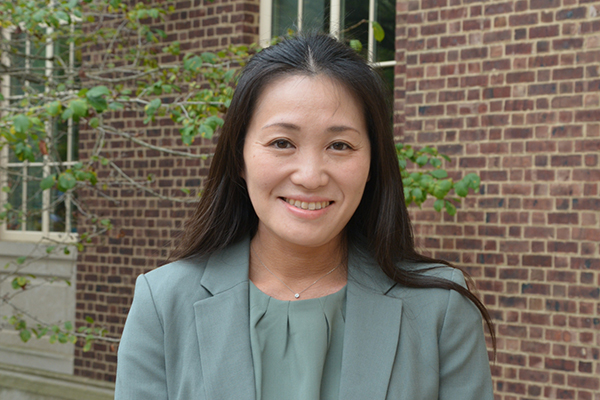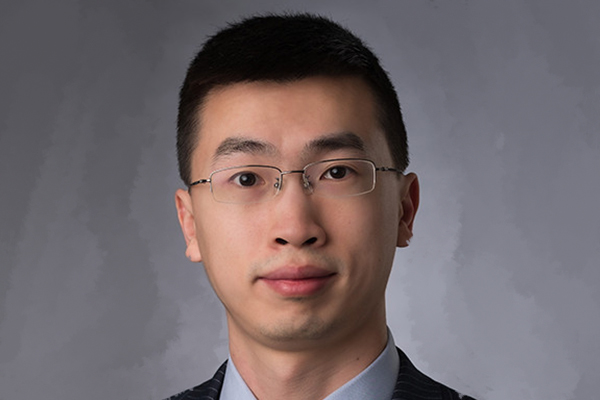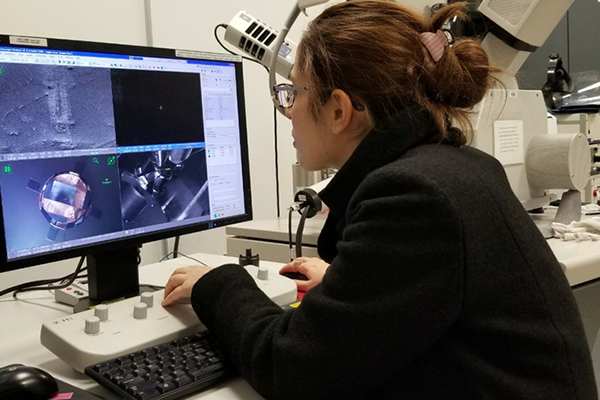|
|
|||||||||||||||||||||||||||||||||||||||||||||||||||||||||||||||||||||||||||||||||||||||||||||||
|
|||||||||||||||||||||||||||||||||||||||||||||||||||||||||||||||||||||||||||||||||||||||||||||||
Content Administrator
Welcoming new faces to MatSE
Darren Pagan is an assistant professor and an associate with the Institute for Computational and Data Sciences. Prior to joining Penn State, he was a staff scientist overseeing the structural materials and mechanics program at the Cornell High Energy Synchrotron Source (CHESS). At CHESS, he oversaw the design, construction, and commissioning of the Structural Materials Beamline (SMB) and the Forming and Shaping Technology Beamline (FAST).
“I am very excited to start in the department. The rich materials research across campus and Penn State’s long history studying structural materials make the University a great place to join. I’m looking forward to contributing to this strong tradition through my research program. I focus on innovative, data-driven characterizations to design mechanically superior systems and improve the safety and economic use of existing materials systems.”
Specifically, Pagan’s research focuses on developing data analysis methods for quantifying material deformation, integrating mechanical and scattering models, and expanding experimental capabilities for characterizing microstructure evolution during processing and performance testing of metallic alloys and composites. The goal of his research is to extract quantitative measures of microstructure evolution in-situ to develop, calibrate, and validate computational models and to accelerate the design of superior material systems.
Pagan earned a B.S. in mechanical engineering from Columbia University in 2010 and his Ph.D. in mechanical engineering from Cornell University in 2016. His dissertation research focused on developing crystal kinematic and scattering models for quantifying heterogeneous plastic deformation in single crystals during thermo-mechanical loading from in-situ x-ray data. As a postdoctoral researcher at Lawrence Livermore National Laboratory, Pagan developed new methods for integrating diffraction data with crystal plasticity finite element modeling and used x-ray techniques to characterize granular material deformation in-situ under quasi-static and dynamic loading conditions.
Welcoming new faces to MatSE
 Urara Hasegawa is an assistant professor. Prior to joining Penn State, she was an assistant professor in the Department of Chemical Engineering at Kansas State University.
Urara Hasegawa is an assistant professor. Prior to joining Penn State, she was an assistant professor in the Department of Chemical Engineering at Kansas State University.
Her research focuses on the development of polymeric nanomaterials for controlled delivery of drug and bioactive signaling molecules. Her particular interest is on endogenous generation of reactive oxygen species and gasotransmitters such as nitric oxide, carbon monoxide and hydrogen sulfide and their biological activities.
“In my research, I am seeking to develop drug delivery systems for targeted and controlled delivery of therapeutic agents by applying the fundamental principles of polymer chemistry, materials science, biology, and biomedical science,” said Hasegawa.
Currently, her group is developing polymeric nanomaterials that can generate, scavenge, or respond to these molecules. Her work includes design and synthesis of polymeric nanomaterials using various polymerization techniques, such as reversible addition-fragmentation transfer (RAFT) polymerization and aqueous dispersion polymerization, and biological evaluation of these nanomaterials in cell culture and biological systems. These polymeric nano-platforms are useful not only for therapeutic applications but also for unveiling the physiological or pathological roles of these tiny bioactive molecules in the human body.
Hasegawa received her B.S. and M.Eng. in applied chemistry from Waseda University, Japan. She earned her Ph.D. in biomedical science from Tokyo Medical and Dental University, Japan, and then, worked as a postdoctoral fellow with Professor Jeffrey Hubbell at the Swiss Federal Institute of Technology in Lausanne, Switzerland. She joined the Department of Applied Chemistry at Osaka University, Japan, as an assistant professor in 2011.
Learn more about the Hasegwawa Research Group
Five new faculty members have joined the Department of Materials Science and Engineering (MatSE) at Penn State in 2020—three tenure-line faculty, one assistant teaching professor, and one assistant research professor.
“I am delighted that these outstanding faculty have joined the department,” said Susan Sinnott, professor and head of the department. “Their unique expertise will enable the development of novel materials, advance our educational mission, and strengthen materials science and engineering at Penn State.”
Penn State is committed to and accountable for advancing diversity, equity, inclusion and belonging in all of its forms. We embrace individual uniqueness, foster a culture of inclusive excellence that supports both broad and specific diversity initiatives, leverage the educational and institutional benefits of diversity, and engage all individuals to help them thrive. We value inclusive excellence as a core strength and an essential element of our public service mission.
- Hometown:
The Rodney A. Erickson Discovery Grant Program, named in honor of Penn State's seventeenth president, supports undergraduate student engagement in original research, scholarship, and creative work under the direct supervision of a faculty member.
The 2020 Richard E. Tressler Lecture in Materials will be held at 3 p.m. Thursday, Oct. 22, via Zoom. Melissa Hockstad, president and CEO of the American Cleaning Institute (ACI), will deliver the lecture “Materials for Success: Bringing Together the Elements for a Successful Career” and receive the 2020 R.E. Tressler Award.
The Nanotechnology Characterization Laboratory (NCL) announced that it has accepted calcium phosphosilicate hydrate nanoparticles, or NanoJackets (NJs), which are a new material system invented in the Jim Adair Penn State Lab for diagnostic and drug delivery to human cancer into its Assay Cascade characterization and testing program.































